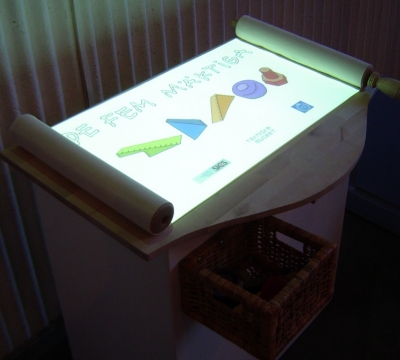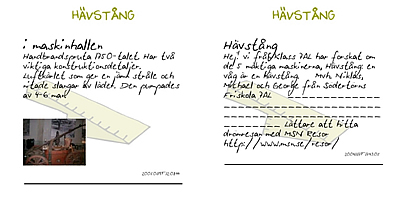Papers
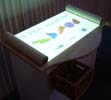
Reports and analyses from around the world are presented at MW2005.
| Workshops |
| Sessions |
| Speakers |
| Interactions |
| Demonstrations |
| Exhibits |
| Best of the Web |
| produced by
|
| Search A&MI
|
| Join our Mailing List Privacy Policy |
The Extended Museum Visit: Documenting and Exhibiting Post-Visit Experiences
Gustav Taxén, The Royal Institute of Technology, and Emmanuel Frécon, The Swedish Institute of Computer Science, Sweden
Abstract
During the last couple of decades, a growing body of research has provided insights into the complex processes of learning that take place in museums. Interestingly, museum-related learning is not limited to the actual visit: what takes place before and afterwards has a profound effect on the learning outcome. The study presented in this paper focuses on the post-visit aspects of the learning process.
Previous research shows that visitors make connections between their experiences in the museum and experiences that happen after the visit. Sometimes these connections can occur weeks or months (or even years) after the visit, depending on when the visitor happens upon a situation that allows the connection to be made.
Documenting these events is obviously quite difficult. Even though it is possible to re-establish contact with visitors after a few weeks or months (e.g., through telephone or e-mail), the information obtained is not in situ. The goal of the present study is to attempt to acquire and analyze more data from these in situ situations, and to re-present the data in an exhibition. To this end, we have designed a system that allows visitors to send images and text messages to a central server through e-mail, SMS or MMS. The data from the server can then be visualized as a weblog (blog) or in some other suitable form.
We collaborated with the Museum of Science and Technology in Stockholm, Sweden. A large part of the Museum's Science Centre is devoted to five mechanical principles: the screw, the plane slope, the lever, the wheel and the wedge. We have designed an exhibit that utilizes our system to present messages (images and text) from visitors on the subject of the five principles in the science centre itself. It is also possible to access the messages through a public Web page.
From the Museum's perspective, our exhibit not only provides new opportunities for documenting post-visit learning processes, but also has the potential to provide new forms of evaluation data that might be difficult to obtain through other means. Furthermore, it allows Museum visitors to extend the original scope of the mechanical principles exhibition by allowing them to provide their own content (and reflections upon the existing content), a re-occurring theme in many recent technology-based exhibits.
The paper provides a description of our system, the exhibit we have built, how the exhibit is managed, and how it has worked in practice.
Keywords: Learning, Visitor contributions, Post-visit experiences, Design.
Learning In Museums
It is not uncommon for museums today to be involved in different forms of educational activities, and the museum is often regarded as an important tool for educating the public. However, the nature of the learning that takes place in the museum has been the focus of both research and numerous debates during the last few decades.
A common late nineteenth century conceptualization of museum object representation was that any given object could be seen as a representative of its class. When designing displays, there was no room for ambiguity regarding the meaning of any given object (Bennett, 1995, pp. 42-43). In other words, the objects themselves and the way they were arranged were seen as having the capability of communicating a certain specific meaning to the visitor. This view of learning appears to have been very influential until quite recently (e.g., Hooper-Greenhill, 1994) and indeed, the notion of meaning as something encoded in the design of an exhibition has been embodied within numerous communication models for museums since the 1970s (ibid). A common assumption in these models is that the visitor can later decode the designer's message that has been encoded into an exhibition or exhibit. When this decoding does not take place (or when it becomes erroneous), it is considered to be the result of different kinds of interference, both with respect to the exhibition itself (e.g., signs may have such a small font that they become difficult to read) or with respect to other visitors (e.g., another visitor moved in front of a sign as it was being read).
However, such models of interpretation have recently been criticized by researchers who argue that more holistic perspectives are required. More specifically, it is claimed that museum visitors should be thought of as active interpreters rather than as passive message decoders: their background, previous experiences, current wishes, expectations and motivation towards the subject at the time of the visit are factors that heavily influence the learning outcome (e.g., Hooper-Greenhill, 1994; Caulton, 1996; Hein, 1998). In addition, learning does not just depend on the interplay between the exhibition and the visitor: other physical and social circumstances of the visit shape the learning process to a large extent (Falk & Dierking, 2000). So rather than focusing on the exhibition as embodying a specific message (encoded by the exhibition designer), these authors instead tend to focus on the museum visitor as a unique individual who creates individualized meaning from the exhibit by way of the interplay between the personal, social and physical circumstances of the visit.
Interestingly, the learning process does not appear to end when visitors leave the museum; in fact, it seems that many people continue to construct new knowledge from their visit for long periods of time. Indeed, it seems that many people draw conclusions that are related to their visit outside the museum, after the visit, when they encounter a situation that allows them to 'make a connection' (ibid., 4-10). Documenting these situations is, naturally, quite difficult. Falk and Dierking mention a number of studies where researchers have telephoned visitors some time after the visit and asked them to recall the museum visit and describe how it has shaped later encounters and experiences. Although important and valid, this data consists of the learners' recollection of their experiences; there is typically no hard data from the actual situation itself (e.g., video or tape recordings). Thus, one of the goals of the study presented in this paper was to see whether it was possible to obtain such in situ data through the help of modern communication technology.
We work with the Museum of Science and Technology in Stockholm. The specific target of our study is a collection of exhibits in the museum's science center called the Mighty Five. These exhibits illustrate five mechanical principles: the screw, the plane slope, the lever, the wheel, and the wedge. The museum has been planning a re-design of its science center for some time, and is currently evaluating the exhibits. Thus, our work had the opportunity to provide data that might support the evaluation process. One of the early results of the evaluation is that many visitors fail to grasp the way the exhibits relate to one another (i.e., that they constitute a set of different, yet interrelated mechanical principles). By exhibiting examples of situations when the Mighty Five have been discovered outside the museum, we hoped that we would be able to provide additional context for supporting the conceptual integration of the exhibits in the room.
Exhibit Description
Our work began with a pre-study where we developed the initial idea for our exhibit: a sort of logbook where visitors could record their museum-related experiences through cell phone SMS and MMS messaging. The reason for focusing on SMS messages was that cell phones are ubiquitous devices today: most people (even rather young children) own one, or have constant access to one. It is a device that most people find natural and easy to use, and SMS messaging is a well-known and popular communication feature. Mobile telephones with cameras and multimedia messaging capabilities are also becoming rather common, and would provide an additional data channel for our visitor contributions as well.
In order to judge the feasibility for such an exhibit, we began by interviewing a small number of students and adults. The questions were very open-ended, but mainly focused on the issue of motivation; i.e., what would be enough to motivate a person to send an SMS message to a museum exhibit? The answers indicated that for some people, the ability to shape an exhibition in a museum and have other people read one's opinions in the museum would be enough. For other people, some sort of competition or explicit task was felt to be required. We also looked at other similar applications that appeared to be successful. For example, City, a free newspaper published in the Stockholm area, features a daily SMS-chat column to which anyone can contribute: with a bit of luck, the message will appear in print next morning. These initial investigations suggested that it might be worthwhile to develop a prototype exhibit.
The Prototype
Our first design consisted of a large white book into which text was projected using a computer projector. By pushing at the edges of the book, it was possible to 'turn the page'. Each 'chapter' in the book corresponded to one of the Mighty Five. Chapter selection was done by placing one of five prepared phicons (physical icons) (Ishii & Ullmer, 1997), each corresponding to one of the Mighty Five, on to an RFID tag reader. The book had the capability of receiving SMS, MMS and (for completeness) e-mail messages, and each new message was added as a paragraph in the book. A 'live' copy of the book could also be accessed from the WWW.
The prototype was exhibited at two public events: the first was at the annual Open House at the Swedish Institute of Computer Science, and the second was at a project evaluation event at the Stockholm Concert Hall. We estimate that roughly 150 visitors used the prototype during these two events. The outcome of the first event was encouraging, although it became obvious that the user interface for page-turning was quite awkward in practice. As a result, we chose a new metaphor for the exhibit – that of a book scroll – and the page-turning interface was replaced by a handle for 'scrolling' the text forwards and backwards. The new prototype was received favorably at the second event, and the new handle-based interface seemed to work well. Thus, we decided to build a version suitable for exhibition.
Exhibition Version
The resulting exhibit is designed as follows. The core of the exhibit is an off-the-shelf weblog (blog) installation (currently WordPress, http://wordpress.org/) with two different output channels. Apart from being available as a Web site like any other blog, the blog is visualized differently in the museum. The exhibit itself is designed to suggest a magic book scroll on which visitors can read the messages currently available (figure 1). Each message is drawn in a hand-written style and can contain any number of pictures (figure 2). The messages are marked with the date and time of their arrival. A wooden lever can be turned to scroll through the book. One chapter at a time is shown; and chapter changing is done by placing a wooden phicon on top of a large circular target (figure 3). The phicons have shapes that are intended to be reminiscent of the Mighty Five and are color coded. The visuals are projected from above using a computer projector, giving the book an attractive surface glow. Because the exhibit makes use of RFID tags, the phicons do not have any visible wires or buttons: the effect contributes to the overall feeling of magic that we wanted to achieve. The design of the Web site attempts to offer enough cues so as to connect the site back to the exhibit (figure 4): hand-written titles, icons that resemble the wooden phicons and with the same color codes, etc.
Fig 1: Our book roll exhibit
Fig 2: Example messages (with images) in the book roll exhibit
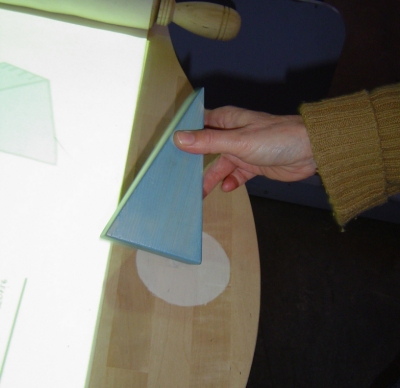
Fig 3: Wooden phicons used for book chapter selection
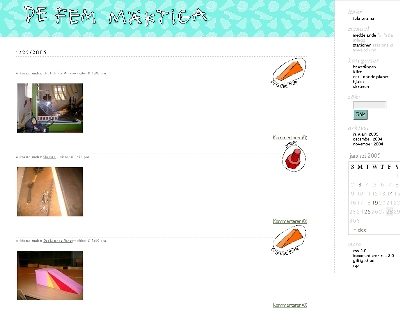
Fig 4: A snapshot of the main Web site on the 28th of January 2005.
A poster and a stand with pocket-sized explanatory leaflets are positioned next to the exhibit. They illustrate how messages arrive at the book and also describe how visitors can contribute their own content. The leaflet also lists relevant phone numbers and email addresses and provides the URL for the WWW version of the book.
The user interface of the exhibit consists of two input devices. The first is an optical USB mouse that is hidden in the right-hand-side of the book scroll. When the lever is turned, the mouse registers the motion as mouse pointer movement, which is used to determine how much to move the book text. The second input device is an RFID tag reader which is hidden under the front side of the table on which the scroll is positioned. This device recognizes RFID tags that have been embedded into the five wooden phicons. Whenever the tag reader status changes, a report is sent to the visualization system which, in turn, changes the book chapter accordingly.
The same phone number is used for SMS and MMS contributions. Chapter differentiation is made by using the first word of the message or the subject header (which is assumed to correspond to the name of one of the five mechanic principles). Extended SMS messages (i.e., longer than 160 characters) are accepted. For e-mail contributions there is one specific address for each of the Mighty Five. MMS messages and e-mails may also contain pictures. Currently, all content is sent to the blog without moderation, although current Web technologies would make it simple to supervise new entries. Once an inappropriate message has been discovered by the museum staff, it can immediately be removed using any standard Web browser.
mBlog
From a technical point of view, the core of our exhibit is mBlog, a system for mobile blogging being developed at the Swedish Institute of Computer Science (Frécon, 2003), together with a set of programs for the supervision of overall system behaviour. There are a number of existing solutions for so-called moblogging, i.e. the ability to send content to a blog from mobile terminals. For example, NewBay Software markets FoneBlog (http://www.newbay.com/) to mobile operators, and a number of blogging systems have an e-mail input interface, including TypePad/MovableType (http://www.movabletype.org/) and WordPress (http://wordpress.org/). Our system, however, differentiates itself through a very flexible architecture and its ability to adapt to any blogging back-end that supports the XMLRPC API (Winer, 2002). The system associates one separate operating system process to each core task that it has to perform. There is, for example, one process for SMS reception, one for the transformation of SMS into blog entries, one for e-mail reception, one for the transformation of e-mail messages into blog entries, and so on. A text based communication protocol, with a separate set of commands for each process, is used. This simplifies remote maintenance and allows the system to be run across multiple computers for efficiency. All client-server connections have a basic level of security that is based on the allowance or denial of connecting hosts.
Robustness
For robustness, the system has several self-monitoring technical solutions with a number of error recovery capabilities. These solutions also produce reports when something does not work as intended. Connections between processes are kept alive on a continuous basis: as soon as a client discovers that a server has disappeared, it will periodically attempt to reconnect until it succeeds. Also, a special supervision process manages all processes that are part of the system. This supervision process ensures that the other processes restart in case of error and also provides a common context of execution, which provides the ability for text-file logging and resource management. The system also provides a number of commands for remote operation: manually restarting processes, polling for their presence, forwarding their currently logged output, etc. Furthermore, the system operator is automatically warned through e-mail if any run-time errors or failures occur.
Data Integrity
Data integrity is another key aspect of the mBlog system. All processes that accept input from other devices or processes work using spoolers. Once received, the data is immediately copied to the inbox spooler area. Each process separately monitors this area, and manipulated data is copied to the outbox or error spooler area. Data recovery is then a matter of copying a file from the appropriate directory. Furthermore, all process activity is extensively logged, database backups are done at a regular basis, and the log of the behavior of the processes at the museum exhibit is dynamically copied back to our local network, allowing analysis of, e.g., user interface usage.
Location
Our museum exhibit was assigned a location directly to the left of the entrance to the room containing the Mighty Five exhibition, underneath an existing poster that outlines the contents of the room (figure 5). To the right of our exhibit are a classic blocks-and-tackles exhibit and a larger exhibit that is intended to illustrate the principle of the screw. To the left, directly in front of the entrance, is an exhibit featuring a number of interconnecting cogs of different shapes. In the center of the room is a partly enclosed area with different toys, slides, and smaller exhibits, and the rest of the room is devoted to larger exhibits, most related to the Mighty Five.
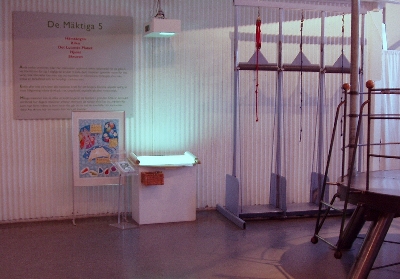
Fig 5: Surroundings of the book scroll exhibit at the Museum of Science and Technology in Stockholm.
In order to get the ball rolling, we wrote a number of messages for each of the five categories ourselves (e.g., 'here is a sort of lever' together with an image of a playground see-saw or 'a playground slide is a form of plane slope'). We then left the exhibit alone for a couple of weeks (with the exception of correcting a few technical issues that arose early on). Our first authentic message appeared after approximately one week: "Hello! We from class 7AL have done research on the Mighty Five. Lever: a pair of scales is a lever. Cheers from Niklas, Michael and George." This was very encouraging, but unfortunately no further messages appeared, so we decided to observe visitor behaviour at the exhibit.
Observations
We observed visitors in the science center for a total of approximately five hours spread over two days, and recorded our observations as notes and still images (unfortunately, no video or audio recordings were allowed – it is against the museum's privacy policy).
The science center audience is quite heterogeneous. Most visitors are children and appear to be between 2 and 18 years old, and normally one or several adults accompany the children. The younger children almost exclusively devoted themselves to the playground in the center of the room and very few paid our exhibit any notice. Older children and adults typically discovered our exhibit on their way to or from the blocks-and-tackles or screw exhibits, but we estimate that it was overlooked by roughly 30-40% of the visitors that went by. It was more common for adults to take note of our exhibit than for children, and this often happened when they were waiting for their children to finish examining one of the nearby exhibits.
Of those who did interact with our exhibit, most seemed to investigate the workings of the user interface (i.e., tried to put a different category of blocks at different locations in the exhibit to see what would happen). A common tactic was to place the blocks on to the projection itself (where the corresponding shapes are drawn), an action which unfortunately does not achieve anything. Some tried to turn the handle before positioning one of the blocks on the tag reader, also with no direct visual effect. Consequently, we have marked the active elements of the user interface more clearly in red, which appears to have had a positive effect. Of those visitors who did open a chapter in the book, a minority seemed to actually read the content. Also, few visitors seemed to read the poster or the leaflets. Indeed, very few visitors seemed to read any of the written texts that appear elsewhere in the room. We are currently experimenting with different ways of adding non-textual usage instructions (e.g., cartoons) into the book itself.
On a more positive note, we have evidence that for visitors who do read the messages, our exhibit has the potential to support the other exhibits in the room. For example, the images below show a woman and a girl who, after some experimentation, managed to position a phicon on to the tag reader to uncover one of the message categories. They then went on to read the messages together (figure 6). During this activity one identified and pointed to exhibits in the room that corresponded to the different messages she and her companion discovered in the book (figure 7). Thus, our exhibit allowed the two visitors to connect the other exhibits to everyday objects and machinery in the 'real world', suggesting that our exhibit has the potential to provide a more substantial context for the exhibits in the science center than what was available previously.
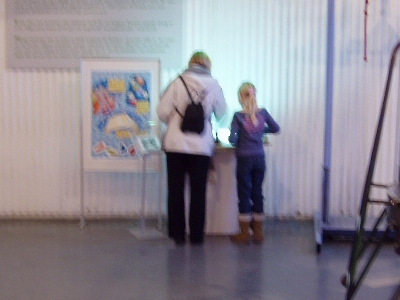
Fig 6: Visitors reading messages in the book scroll exhibit
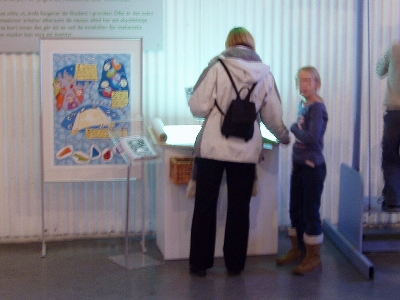
Fig 7: Pointing out exhibits corresponding to messages in the book scroll exhibit.
Dealing With The Lack Of Contributions
Based on the results of the pre-study, we had prepared for the possibility of not receiving any messages to analyze by arranging for a contest as an additional motivation. Since no new messages appeared, we announced that we would distribute 10 movie tickets among the contributions that arrived during a week-long period in connection with the Christmas school holiday. A sign that informed visitors of the competition was added to the exhibit. We also visited the museum in person, explaining the exhibit to visitors and encouraging them to contribute. The response was very favorable with regards to the exhibit itself and its core ideas, but unfortunately, no further visitor contributions appeared.
We always knew that there was a definite possibility that no messages would arrive, but the poor outcome of the contest was nevertheless rather surprising. At the time of writing, we have no data to support an analysis of why visitors chose not to contribute, but we speculate that the reasons may include the following.
- Not a single mischievous message has appeared (apart from a small number of automated spam e-mails), suggesting that it may be hard for the visitors to understand that it is possible to actively contribute to our exhibit. Contributing requires reading instructions, either on the poster (or leaflets), or on the exhibit itself, and therefore our exhibit suffers from the phenomenon that text in general seems to be ignored in the Mighty Five room.
- It appears that visitors tend to treat the Mighty Five room as a playground with pedagogical opportunities rather than as a room for learning. A minority of the adults we observed took the opportunity to explain to their children the principles represented by the different exhibits in the room. Rather, they would focus on the practicalities of the exhibits (e.g., help the children work a lever or tell them which button to push).
- Our exhibit appears to be hard to notice in its current location.
- Our target audience is slightly older than the majority of children who visit the science center.
- Although many of the children and adults we spoke to at the museum were quite enthusiastic about a Mighty Five treasure hunt outside the museum, none actually went through with the activity. It may be that for many people, the museum visit ends when they leave the building, (i.e., it has no conscious post-visit phase where the experiences of the visit are developed and elaborated upon). Even if a situation is recognized as a museum-related learning experience, it may be difficult to remember our exhibit (not to mention finding the leaflet with the instructions for contributing). Or it may simply be that the opportunity to win a movie ticket does not constitute enough motivation for contributing.
In summary, we have had to conclude that for our given context, obtaining visitor contributions in the manner we intended is very difficult indeed. Consequently, we have decided to focus on other forms of contributions, such as engaging school classes in task-based activities.
A Treasure Hunt
The first activity we initiated was a treasure hunt activity that involved two 6th grade classes (12 year olds) with 27 and 10 children, respectively.
The activity itself was designed and hosted by a member of the museum's educational staff, and it began in the science center's multimedia theatre where (after a short introduction) the Mighty Five was presented using a large notepad and models. Then, the children were divided into five groups (one for each Mighty) and were asked to find an example in the museum's machine hall, a large area in the science center that contains numerous machines and machine components, engines, vehicles and models. Each group was given a small notepad for writing something about the find. The groups then searched for roughly 20 minutes (the museum staff member and the teachers were present throughout to assist when necessary). When a group had found an example, they were given a digital camera and were asked to record their find. When all groups were done, we collected the notepads and asked the children to go back to the science center to examine the Mighty Five exhibits there. Meanwhile, we e-mailed the children's notes and pictures to our book scroll exhibit, and notified the children when all messages had appeared.
It appears that the activity was largely successful: the children seemed to enjoy the hunt, and both teachers and museum personnel were satisfied. Indeed, the teachers expressed an interest in continuing the activity in school (including reporting new sightings to the book scroll), and the museum has asked us to extend the time our exhibit is on display so that they can design a new pedagogical program around it.
It should be noted that most of the children had not heard previously of the mechanical principles such as those represented by the Mighty Five, although of course the wheel and the screw were familiar to everyone. This means that for this age group, the pedagogical potential of the activity largely involved allowing the children to discover the ubiquitousness of the Mighty Five. By drawing attention towards fundamental and common mechanical principles, it may be possible to lay the foundation for increased motivation for learning more about how they work. In such a context, our exhibit has the potential to become a growing collection of 'sightings' that illustrate how frequently the mechanical principles presented in the science center appear in everyday life.
Although we did not obtain enough data to analyze the learning outcome of the treasure hunt activity (we had originally intended to use Grounded Theory [e.g., Strauss & Corbin, 1998] as a method for organizing and analyzing visitor contributions), the 10 messages we did receive are nevertheless quite interesting. The texts can be divided into 5 categories:
- Texts that copy the label of the exhibit corresponding to the find, in part or in whole (4 messages).
- Texts that explain why the image in the message constitutes a find (2 messages).
- Texts that, in a single word, describe the type of machinery shown in the image (2 messages).
- Texts that explain how the mechanical principle represented by the find works in this particular case (1 message).
- No text at all (1 message).
The images associated with the texts contain either a depiction of the group's find (8 messages), or a depiction of the group itself in front of (or behind) their find (2 messages).
In our interpretation, the messages illustrate that the children are about to take the step from being able to recognize and name simple mechanical principles to being able to describe how these work. The fact that two groups decided to depict themselves in their images is also interesting. The children were quite enthusiastic in general about being able to contribute to a real museum exhibit and, not surprisingly, being able to see a depiction of oneself in the exhibit supported and strengthened this enthusiasm. We interpret this as a partial confirmation of one of the conclusions we drew in our pre-study: that, for a visitor, being able to shape and influence a museum exhibit can be a motivating factor for contributing content.
Conclusions and Future Work
On the one hand, it seems clear that for our given context, it is very difficult – if not impossible – to motivate visitors to contribute with SMS/MMS/e-mail messages outside the museum in the way we intended, unless they agree to do this as part of a special activity of some sort. The reasons for this are probably numerous. We have already identified a number of problematic issues with the design and placement of our exhibit, and we have begun to address them. Even if a museum-related learning situation is recognized as such by a visitor outside the museum, there is probably no real motivation for bothering with picking up the cell phone, finding the leaflet and sending a message. However, other forms of obtaining in situ data, such as cultural probes (Gaver & Dunne, 1999) and technology probes (Hutchinson et al., 2003) have been very successful in other contexts, and adopting them for the museum learning context may be a suitable topic for a future study.
On the other hand, our exhibit clearly has pedagogical benefits for the museum. We have evidence that it has the potential to offer a 'real life' context for the mechanical principles presented in the science center, and the exhibit appears to be very useful as a target for pedagogical activities within the museum. We intend to continue to work with the museum to develop new activities that involve our exhibit.
Furthermore, the mBlog system has worked very well in practice, and we envision numerous other museum-related applications with our system as a key component. One idea is to add a Q and A station to key exhibits in the museum, where visitors could submit questions related to the exhibit and receive answers from museum experts, either directly at the station or later (through SMS, e-mail, or the WWW). Previously asked questions (and answers) could be accessed in a similar way as in our book scroll exhibit.
Finally, we hope that our experiment serves as an illustration of the fact that non-standard forms of exhibits and exhibitions may require iterative design in place, after they have officially been opened to the public. Even if pre-studies and prototypes show that such exhibits may be feasible, it may be necessary to modify (or even replace) parts of them while they are on display. In situations like these, it may also help to involve visitor representatives directly in the design process (Taxén, 2004, Taxén et al., 2003).
Acknowledgements
This research is supported by DAPHNE, a project funded by the Swedish Foundation for Strategic Research. We would like to thank Mariana Back and Åsa Egeld at the Museum of Science and Technology and the two school classes for their participation. We would also like to thank the other DAPHNE participants for their contributions and suggestions.
References
Bennett, T. (1995). The Birth of the Museum. London: Routledge.
Caulton, T. (1996). Hands-on Exhibitions. Managing Interactive Museums and Science Centres. London: Routledge.
Falk, J. H., and Dierking, L. D. (2000). Learning from Museums. Walnut Creek: AltaMira Press.
Frécon, E. (2003). mBlog: a Mobile Information Service for All. ERCIM News, 54 (July 2003), 16-17.
Gaver, W., and Dunne, A. (1999). Projected Realities. Conceptual Design for Cultural Effect. In Altom, M. W., and Williams, M. G. (Eds.) Proceedings of the 1999 ACM SIGCHI Conference on Human Factors in Computing Systems. New York: ACM Press, 600-607.
Hein, G. E. (1998). Learning in the Museum. London: Routledge.
Hooper-Greenhill, E. (1994). The Educational Role of the Museum. London: Routledge.
Hutchinson, H., Mackay, W., Westerlund, B., Bederson, B. B., Druin, A., Plaisant, C., Beaudouin-Lafon, M., Conversy, S., Evans, H., Hansen, H., Roussel, N., and Eiderbäck, B. (2003). Technology probes: inspiring design for and with families. In Cockton, G., and Korhonen, P. (Eds.) Proceedings of the 2003 ACM SIGCHI Conference on Human Factors in Computing Systems. New York: ACM Press, 17-24.
Ishii, H. and Ullmer, B. (1997). Tangible bits: towards seamless interfaces between people, bits and atoms. In Pemberton, S. (Ed.) Proceedings of the 1997 ACM SIGCHI Conference on Human Factors in Computing Systems. New York: ACM Press, 234-241.
Strauss, A., and Corbin, J. (1998). Basics of Qualitative Research. Techniques and Procedures for Developing Grounded Theory. Thousand Oaks: Sage Publications.
Taxén, G., Hellström, S.-O., Tobiasson, H., Back, M., and Bowers, J. (2003). The Well of Inventions - Learning, Interaction and Participatory Design in Museum Installations. In Perrot, X. (Ed.) Proceedings of the Seventh International Cultural Heritage Informatics Meeting. CD-ROM. Archives & Museum Informatics, 2003.
Taxén, G. (2004). Introducing Participatory Design in Museums. In Clement, A., de Cindio, F., Oostveen, A.-M., Schuler, D., and van den Besselaar, P. (Eds.) Proceedings of the Eighth Participatory Design Conference. New York: ACM Press, 204-213.
Winer, D. (2002). RFC: MetaWeblog API. Last updated 14-March-2002. Consulted January 25, 2004. http://xmlrpc.scripting.com/discuss/msgReader$2198
Cite as:
Taxén, G., and E. Frécon, The Extended Museum Visit: Documenting and Exhibiting Post-Visit Experiences, in J. Trant and D. Bearman (eds.). Museums and the Web 2005: Proceedings, Toronto: Archives & Museum Informatics, published March 31, 2005 at http://www.archimuse.com/mw2005/papers/taxen/taxen.html
April 2005
analytic scripts updated:
October 2010
Telephone: +1 416 691 2516 | Fax: +1 416 352 6025 | E-mail:

